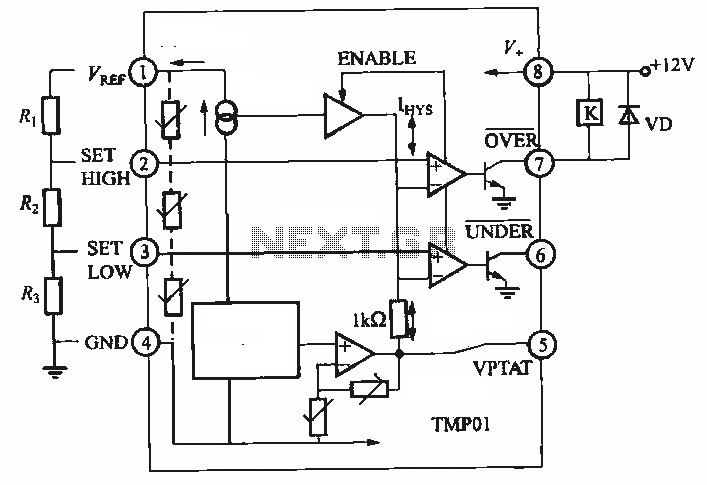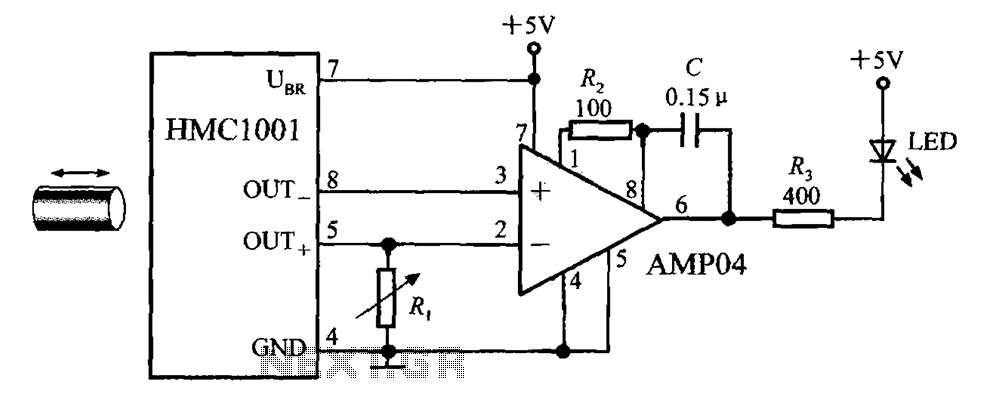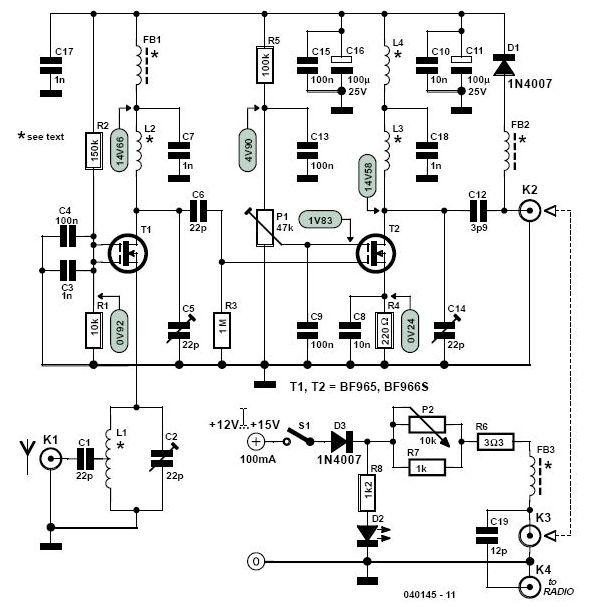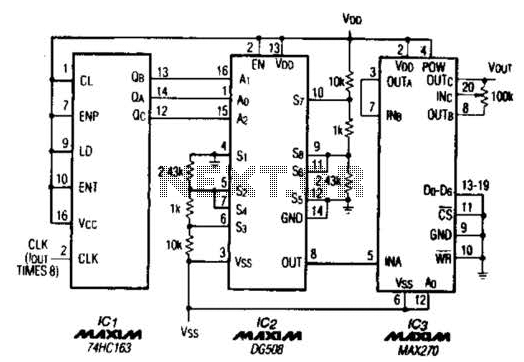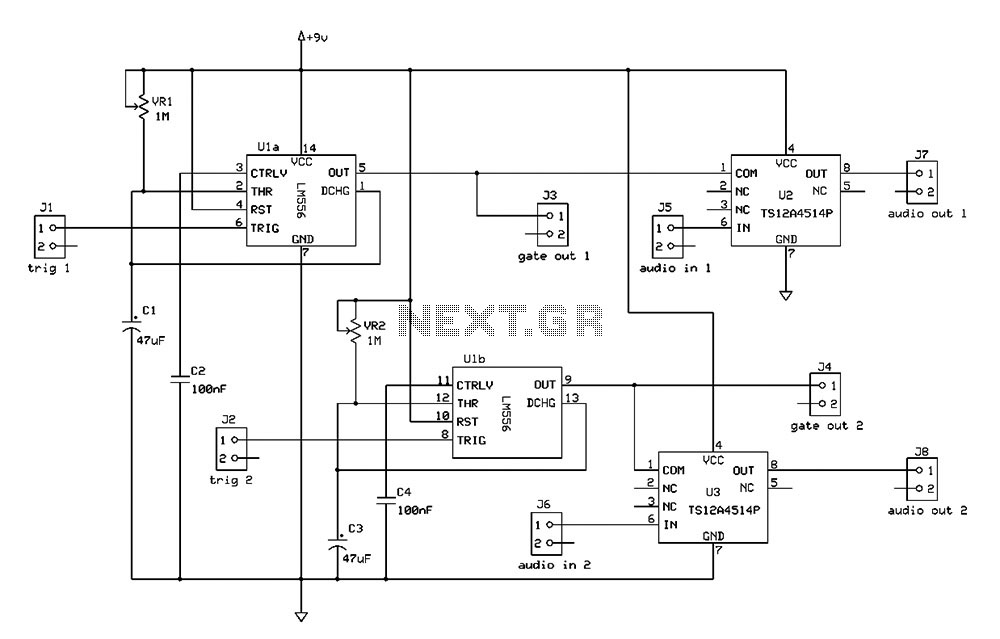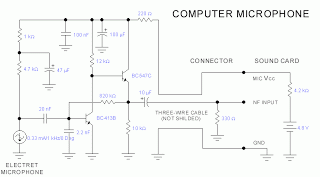
The NE555 FM modulation circuit

The figure illustrates an NE555 frequency modulation (FM) circuit. In this circuit, pin 7 of the NE555 is connected to an FM modulation section that consists of resistor R5 and capacitor C2, although the frequency range is somewhat limited. Transistors VT1 and VT2 create a current Miller circuit that produces a charging current in the charging circuit, with the current magnitude determined by resistors R2 and RP1. The low-frequency characteristics of the circuit...
The NE555 timer is a versatile integrated circuit commonly used for generating precise timing and oscillation in various applications. In this FM modulation circuit, the NE555 operates in astable mode, where it generates a continuous square wave output. The frequency of this oscillation is influenced by the values of R5 and C2, which form a timing network. The frequency range may be limited due to the component values selected, which can be adjusted to optimize performance.
The transistors VT1 and VT2 are configured in a current Miller circuit arrangement. This configuration is essential for creating a feedback loop that enhances the charging current within the circuit. The charging current is crucial for modulating the frequency of the output signal, and its magnitude is controlled by the resistors R2 and RP1. Adjusting these resistors allows for fine-tuning of the current flow, thereby impacting the modulation depth and overall performance of the circuit.
The low-frequency response of this circuit can be critical for applications requiring audio modulation or signal processing. The design considerations should include the selection of appropriate component values to achieve the desired frequency range and modulation characteristics. Additionally, the stability of the circuit under varying load conditions should be analyzed to ensure reliable operation. Overall, the NE555 FM modulation circuit presents a practical solution for generating modulated signals in electronic applications.In the figure is the NE555 FM modulation circuit. In the figure, NE555 7-pin is connected with a FM modulation circuit which is composed with R5 and C2, but the frequency range is kind of small. VT1 and VT2 form a current Miller circuit, which generates a charging current in the charging circuit, the current magnitude is decided by R2 and RP1.
The low-freque.. 🔗 External reference
The NE555 timer is a versatile integrated circuit commonly used for generating precise timing and oscillation in various applications. In this FM modulation circuit, the NE555 operates in astable mode, where it generates a continuous square wave output. The frequency of this oscillation is influenced by the values of R5 and C2, which form a timing network. The frequency range may be limited due to the component values selected, which can be adjusted to optimize performance.
The transistors VT1 and VT2 are configured in a current Miller circuit arrangement. This configuration is essential for creating a feedback loop that enhances the charging current within the circuit. The charging current is crucial for modulating the frequency of the output signal, and its magnitude is controlled by the resistors R2 and RP1. Adjusting these resistors allows for fine-tuning of the current flow, thereby impacting the modulation depth and overall performance of the circuit.
The low-frequency response of this circuit can be critical for applications requiring audio modulation or signal processing. The design considerations should include the selection of appropriate component values to achieve the desired frequency range and modulation characteristics. Additionally, the stability of the circuit under varying load conditions should be analyzed to ensure reliable operation. Overall, the NE555 FM modulation circuit presents a practical solution for generating modulated signals in electronic applications.In the figure is the NE555 FM modulation circuit. In the figure, NE555 7-pin is connected with a FM modulation circuit which is composed with R5 and C2, but the frequency range is kind of small. VT1 and VT2 form a current Miller circuit, which generates a charging current in the charging circuit, the current magnitude is decided by R2 and RP1.
The low-freque.. 🔗 External reference
